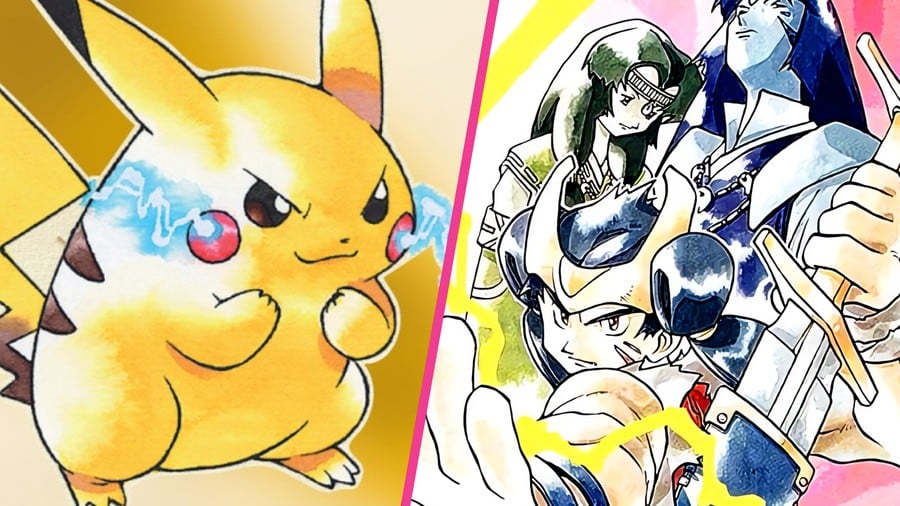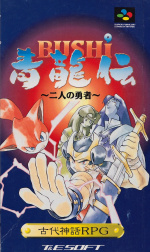
Game Freak is best known today as the creative force behind the mainline Pokémon games, a series of titles which has sold millions of units worldwide and is effortlessly one of the most popular and recognisable franchises in the world of interactive entertainment.
However, once upon a time, the studio was less well-known, and it released a series of games before entering the world of Pocket Monsters – including Mendel Palace, Pulseman, Magical Tarurūto-kun and Mario & Wario.
The arrival of Pokémon Red and Blue in Japan in 1996 turned Game Freak into one of the hottest development teams in its homeland. A global launch in 1998 would bring international success, but between those events, Game Freak released one of the most unique SNES RPGs of all time – a title which sadly never saw the light of day outside Japan.
1997's Bushi Seiryuuden: Futari no Yuusha (which translates as Warriors of the Blue Dragon Legend – The Two Heroes) looks, at first glance, very much like a Zelda-style action adventure. The player character can move around the top-down world freely and is even able to cut grass by slashing at it with his sword.
However, talking to an NPC presents the player with a first-person perspective, while entering a dungeon (or running into an enemy) switches to a side-on view, very much like Zelda II. During these portions, it feels like the game is running in real-time, but in fact, it uses a turn-based system where enemies only move when your character moves (the Shiren the Wanderer series uses a similar mechanic). There are additional layers which make this more unique than your typical RPG, including a monster helper named Wokuu, who is capable of lifting the player character in the air, and the "Heart Eye", which allows you to find hidden areas and scope out the relative strength of enemies.
The most striking thing about Bushi Seiryuuden for those who haven't seen or heard of it before is the character design, which looks very similar to the early Pokémon games. That's because legendary Pokémon artist Ken Sugimori worked on it. The links go deeper than that, though; the music is by Pokémon composer Junichi Masuda, and the game is directed by none other than Satoshi Tajiri, the man who created the Pokémon franchise. While it would be a considerable stretch to say that Bushi Seiryuuden shares major gameplay similarities with Pokémon, the same creative DNA flows through both titles.
So why was this epic game never released outside of Japan? The reasons have been covered in the past, most notably in Did You Know Gaming's excellent Region Locked series. In 1997, Game Freak was still virtually unknown in the West as Pokémon hadn't been released there yet (and even when it did, it would arguably be some time before the studio became famous in its own right). Secondly, '96 was the year in which the N64 launched in North America, so the notion of localising a relatively obscure Super Famicom RPG in 1997 wouldn't have had much appeal.
The other stick in the mud is the fact that Bushi Seiryuuden wasn't created with Nintendo's involvement, so it had little chance of coming across as a first-party release. Early reports in Japan claimed that Enix was publishing the title in that region, only for the deal to apparently fall through. Small-scale publisher T&E Soft – which brought the Hydlide series to Japanese home computers and a series of golf sims on consoles – stepped in to handle distribution, and this won't have helped Bushi Seiryuuden's chances of getting out of Japan. The sheer size of the translation task will have been another massive roadblock; it wasn't until 2021 that a fan translation appeared, which gives you some indication of the size of the job.
Bushi Seiryuuden often gets overlooked when people speak about the best RPGs for the SNES, and that's a shame. While it's perhaps not as good as the best the console has to offer in the genre, it has some very interesting ideas – ideas which, you would have hoped, would have evolved and become part of the Pokémon franchise itself.
Since 1996, Game Freak's focus has been understandably fixed on all things Pocket Monsters, with only a few rare deviations from that path (Drill Dozer, Tembo the Badass Elephant, Giga Wrecker) appearing. Had Pokémon not become such a massive commercial success, then there's a chance that Bushi Seiryuuden could have evolved into something bigger – but we'll never know. Still, it's well worth seeking out, especially as an English translation now exists.

